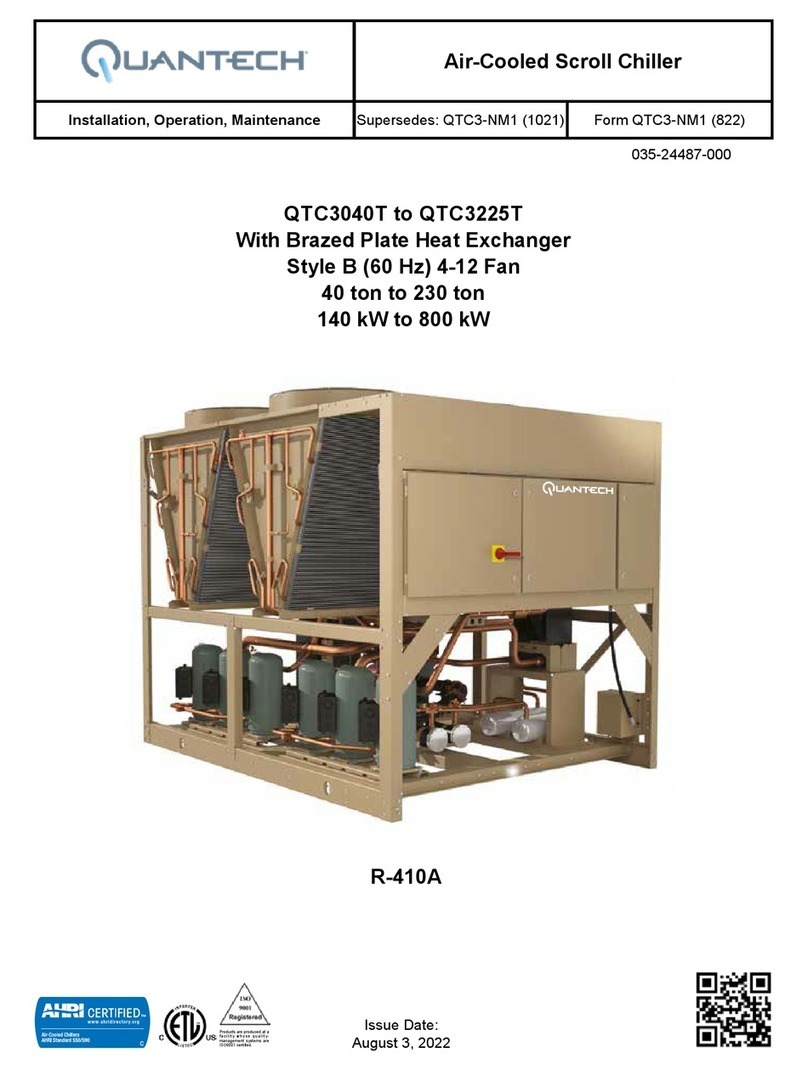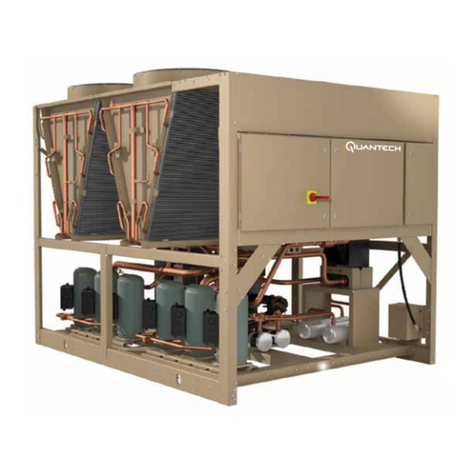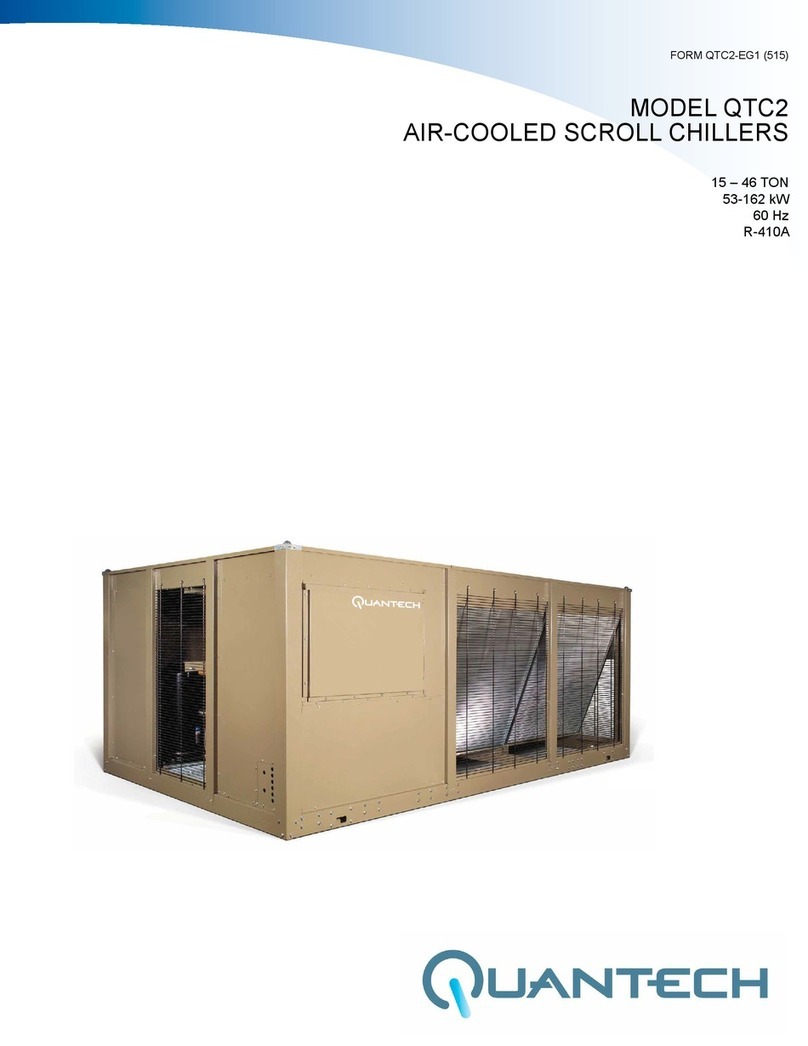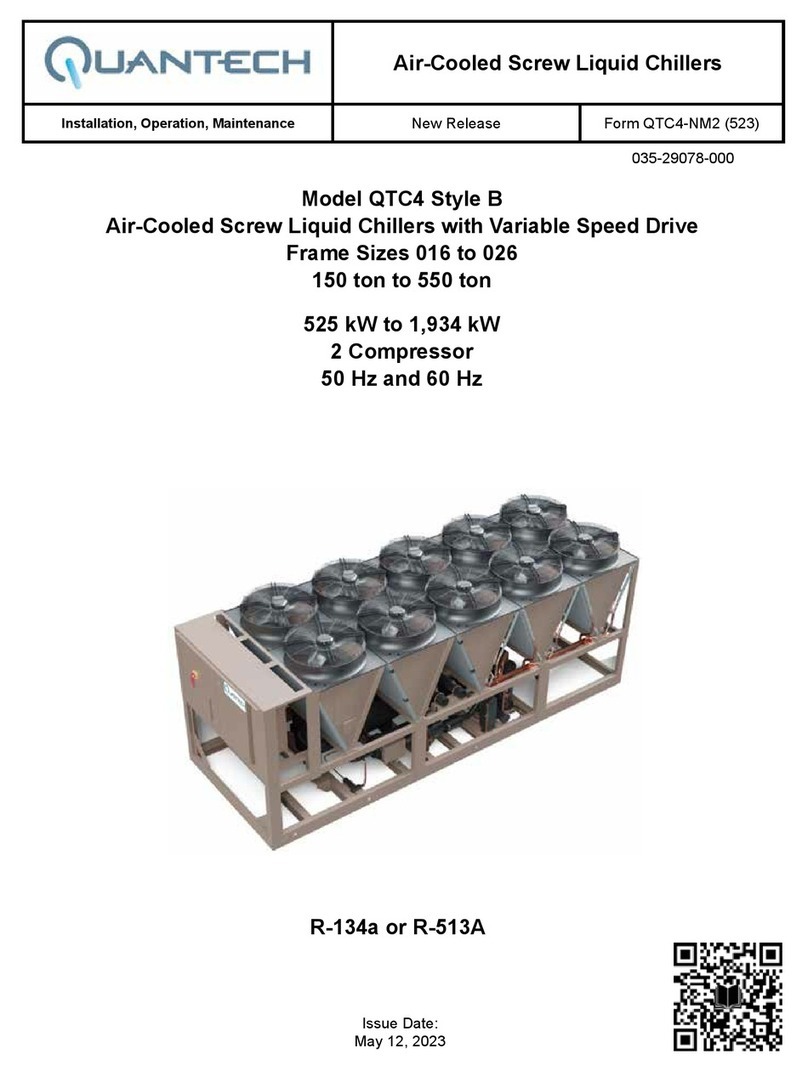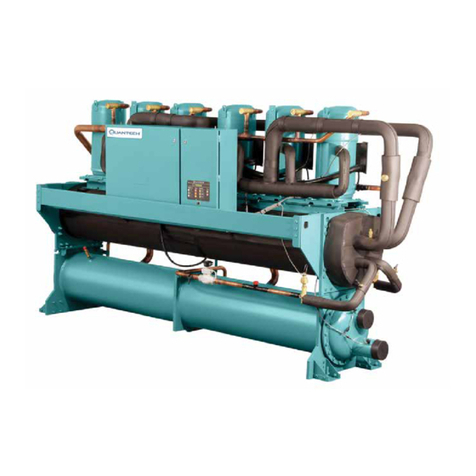
This equipment is a relatively complicated apparatus.
During rigging, installation, operation, maintenance,
or service, individuals may be exposed to certain com-
ponents or conditions including, but not limited to:
heavy objects, refrigerants, materials under pressure,
rotating components, and both high and low voltage.
Each of these items has the potential, if misused or
handled improperly, to cause bodily injury or death. It
is the obligation and responsibility of rigging, instal-
lation, and operating/service personnel to identify and
recognize these inherent hazards, protect themselves,
and proceed safely in completing their tasks. Failure
to comply with any of these requirements could result
in serious damage to the equipment and the property in
Important!
Read before proceeding!
General safety guidelines
which it is situated, as well as severe personal injury or
death to themselves and people at the site.
This document is intended for use by owner-authorized
rigging, installation, and operating/service personnel.
It is expected that these individuals possess indepen-
dent training that will enable them to perform their
assigned tasks properly and safely. It is essential that,
prior to performing any task on this equipment, this
individual shall have read and understood the on-prod-
uct labels, this document and any referenced materials.
This individual shall also be familiar with and comply
with all applicable industry and governmental stan-
dards and regulations pertaining to the task in question.
Safety symbols
The following symbols are used in this document to alert the reader to specific situations:
Indicates a possible hazardous situation
which will result in death or serious in-
jury if proper care is not taken.
Indicates a potentially hazardous situa-
tion which will result in possible injuries
or damage to equipment if proper care is
not taken.
Identifies a hazard which could lead
to damage to the machine, damage to
other equipment and/or environmental
pollution if proper care is not taken or
instructions and are not followed.
Highlights additional information useful
to the technician in completing the work
being performed properly.
External wiring, unless specied as an optional connection in the manufacturer’s product line, is not
to be connected inside the control cabinet. Devices such as relays, switches, transducers and controls
and any external wiring must not be installed inside the micro panel. All wiring must be in accor-
dance with Johnson Controls’ published specications and must be performed only by a qualied
electrician. Johnson Controls will NOT be responsible for damage/problems resulting from improper
connections to the controls or application of improper control signals. Failure to follow this warning
will void the manufacturer’s warranty and cause serious damage to property or personal injury.
Quantech
2
Form QTH1-QSG1
Issue date: 12/20/2023







